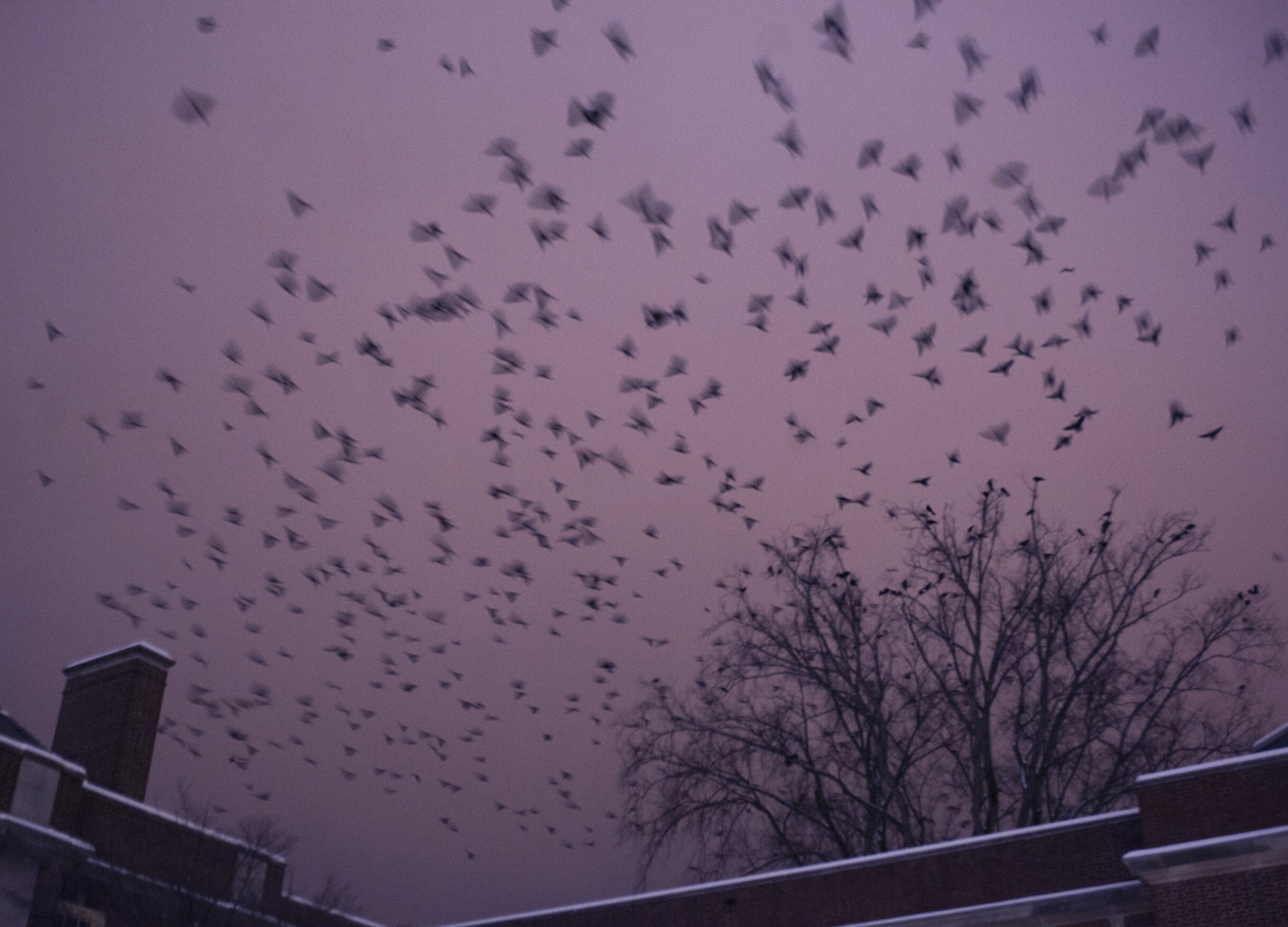Well we don’t have ravens, but I woke up this morning to the raucous screeching of a crow — cousin of the common raven — outside my window. Not an uncommon occurrence in State College today, but ten years ago, crows were rarely seen in town or on campus. Now they are ubiquitous in pairs throughout the summer tending their nests and their young and in groups roosting at night on campus in the winter.

I’m told they group together at night in the winter in locations that are slightly warmer and where there is light, and of course trees in which to roost. This makes campus an ideal location and this winter we saw streams of crows congregating at dusk, a la Hitchcock’s “The Birds,” flying to the front of Old Main to spend the night in the trees.
I suppose I noticed my pair first as they are noisy and large. Initially, they didn’t bother me because, as I walked to campus in the morning I would see a variety of road kill and by afternoon on my return, the streets were clean. Love those carrion eaters. Well, omnivores at any rate.
Two things really brought the crow population to my notice. The first was their first congregation and roosting spot above the main bus stop downtown. The sidewalk and grass quickly became coated in a layer of white crow excrement. Apparently, I wasn’t the only one to notice as soon the university’s Office of Physical Plant announced they would use “bangers and screamers” and dead crow effigies to move the flock somewhere else. We’ve been using “bangers and screamers” now for years and they do move the crows from populated areas to less bothersome spots. But the crow population is expanding as well.
The second event bringing the crows into focus was the day I arrived home to find one calmly walking on my roof ridge. Goosebumps popped out on my arms and legs and a cold chill ran down my spine. The image of evil from every movie depiction of crows and there it was, on my roof.
However, recent research suggest that crows are highly intelligent, using tools and creating tools as well and perhaps participating in competitions. They certainly have learned that humans here in Pennsylvania are not likely to harm them and cheeky might be the best word to describe their behavior.
While my pair of crows seem to live and nest in my backyard — although I can’t find the nest — they seem to be alone. Other breeding pairs usually have young offspring and family members who help with the nest and the nestlings. But my pair, larger this year than last, seem to be on their own.
I think the reason the crows keep moving back to populated areas is they actually like us. My pair don’t seem to mind if I’m on the deck and they fly down to investigate. I don’t usually see them on the rail unless I’m outside. I’m hoping it’s friendship I see in the bright eye and tip of the head and not an appraisal of dinner to come.
